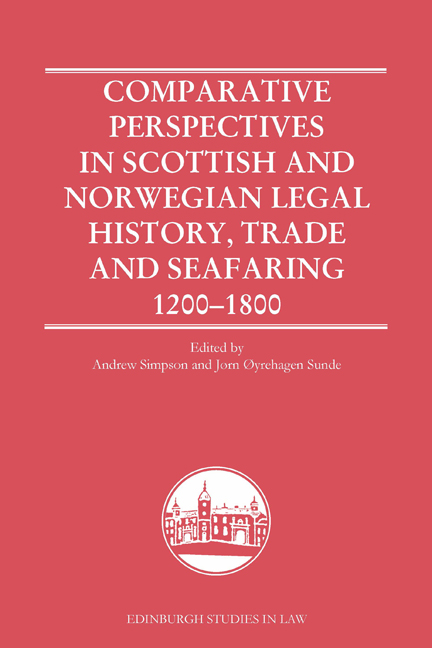3 - Law and Administrative Change in Norway, Twelfth–Fourteenth Centuries
Published online by Cambridge University Press: 17 November 2023
Summary
A: REGULARISATION AND LEGAL PLURALITY
The history of law and administrative change in Norway during the central middle ages is, as in Scotland, a history of growing regularisation of royal justice and of legal plurality, both in terms of legal institutions and legal rules. Regularisation and legal plurality do, at first glance, appear to be opposing forces on the battlefield for legal unification. However, that hostility only really emerged in the seventeenth century, and crystallised in the eighteenth century. In the central middle ages, their relationship was far more complex. In short, the level of state formation made it possible for regularisation to happen alongside toleration of a certain degree of legal plurality. This pluralistic, tolerant regulation was at the core of medieval politics in Norway in the second half of the thirteenth and first half of the fourteenth century.
The most important event in Norwegian medieval legal history is the making of the Code of the Norwegian Realm in 1274. However, the regulation of law started in the second half of the twelfth century and the emerging legal order would not finally take its full shape before the first half of the fourteenth century. We are hence talking of a process that took at least 200 years, with roots stretching further back and consequences reaching further ahead in time. The process is to some extent paralleled in Scotland and Norway, taking place over the same time period and also the same time span. This is, however, a process that is taking place all over Western Europe at this time. The uniqueness lies rather in how the relationship between regulation and pluralism was settled in different parts of Christendom. A comparison between Scotland and Norway is of great interest. On one hand, the two realms had a comparable population size and economy and parallels in terms of the history of political unification. On the other hand, the Scottish feudal aristocracy, and hence military and administrative organisation, the number and, to an extent, the size of towns, and not least the vastness of the Norwegian realm, are important differences between the Scottish and Norwegian realms. In short: the similarities make a comparison possible and the differences make it interesting.
B: THE REGULATION OF LAW THROUGH LEGISLATION
(1) The legal provinces
Present-day Norway was the core of the medieval Norwegian realm.
- Type
- Chapter
- Information
- Comparative Perspectives in Scottish and Norwegian Legal History, Trade and Seafaring, 1200-1800 , pp. 95 - 121Publisher: Edinburgh University PressPrint publication year: 2023

